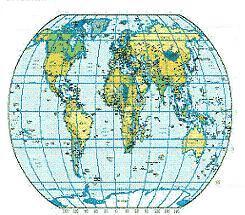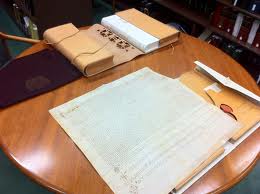
Lines of longitude, called meridians, run perpendicular to lines of latitude, and all pass through both poles. Each longitude line is part of a great circle. There is no obvious 0-degree point for longitude, as there is for latitude. Throughout history many different starting points have been used to measure longitude.
By international agreement, the meridian line through Greenwich, England, is currently given the value of 0 degrees of longitude; this meridian is referred to as the Prime Meridian. Longitude values indicate the angular distance between the Prime Meridian and points east or west of it on the surface of the Earth.
The Earth is divided equally into 360 degrees of longitude. There are 180 degrees of longitude to the east of the Prime Meridian; when the directional designator is omitted these longitudes are given positive values. There are also 180 degrees of longitude to the west of the Prime Meridian; when the directional designator is omitted these longitudes are given negative values. The 180-degree longitude line is opposite the Prime Meridian on the globe, and is the same going either east or west.
Commonly Used Terms When Discussing Longitude or Latitude
Equator—The line which encircles the Earth at an equal distance from the North and South Poles.
Geographic coordinates—Coordinate values given as latitude and longitude.
Great circle—A circle formed on the surface of a sphere by a plane that passes through the center of the sphere. The Equator, each meridian, and each other full circumference of the Earth forms a great circle. The arc of a great circle shows the shortest distance between points on the surface of the Earth.
Meridian—A great circle on the surface of the Earth, passing through the geographical poles and some third point on the Earth's surface. All points on a given meridian have the same longitude.
Parallel—A circle or approximation of a circle on the surface of the Earth, parallel to the Equator and connecting points of equal latitude.
Prime Meridian—The meridian of longitude 0 degrees, used as the origin for the measurement of longitude. The meridian of Greenwich, England, is the internationally accepted prime meridian in most cases.
 Print
Print Email
Email







